By Rabbi Michoel Seligson
Rabbi Dr. Nissan Mindel (2nd of Nissan 5672-1912- 12th of Tamuz 5759-1999) was born in 5672-1912 on the 2nd of Nissan, in Riga, Latvia, to Horav Yaakov Yitzchak and Mrs. Bunya Mindel. At the age of fifteen, he was studying in the Yeshiva Torah Im Derech Eretz which combined Torah studies and secular subjects and was under the direction of Rabbi Chaim Mordechai Hodakov. The curriculum was based on the teachings of Horav Shimshon Rafael Hirsch and encouraged the older students to continue their studies in the university and at the same time to stay connected to Torah, Mitzvos and Yiras Shomayim.
Contact with Chabad
After the Previous Rebbe’s release from prison in 1927 on the 13th Tamuz, the Rebbe left Russia for Riga. Reb Nissan began attending the Rebbe’s Farbrengens. The first time he came to a Farbrengen, there was a big crowd and Reb Nissan hung on to a door to see the Rebbe. The Rebbe’s face and image remained with Reb Nissan and deeply impressed him.
That same year, Reb Nissan’s brother needed to travel from Riga to Argentina and his uncle, Hachossid Reb Avrohom Nemtzov, later Reb Nissan’s father-in-law, instructed him to enter into Yechidus with the Previous Rebbe, Reb Nissan accompanied his brother into the Yechidus. In later years, Reb Nissan recalled, “This Yechidus was the primary reason that I became closer to the Rebbe.”
Pursuing his education
In 1930, Reb Nissan traveled to England, where he completed and received Bachelor and Masters Degrees from the University of Manchester. He later received his Doctorate in Semitic languages from Columbia University in New York. In 1937, he married Miss Necha Nemtzov and went into business with his father-in-law in England.
Rebbe’s Secretary
Dr. Mindel was highly recommended to the Previous Rebbe by Rabbi Hodakov. The Rebbe made inquiries regarding Reb Nissan’s background and his education. Reb Nissan came to Riga when the war broke out and Rabbi Hodakov suggested that Reb Nissan should teach the senior grade at Yeshiva Torah Im Derech Eretz, which he did for a number of months.
Rabbi Hodakov told Dr. Mindel that the Rebbe wanted chassidishe stories to be translated into English. The Rebbe chose Dr. Mindel for this task because though many professionals were able to translate from Yiddish or Hebrew into Russian, few were able to translate into English. Reb Hodokov immediately began giving material to Dr. Mindel and the first story he translated was about the famous Chossid of the Alter Rebbe, Reb Gavriel Nose Chein.
Dr. Mindel was visiting with his parents in Latvia when he received a phone call from Rabbi Hodakov. During the call, there was a lapse of a few moments in the conversation and it was clear that Rabbi Hodakov was speaking with the Rebbe on his side of the call. As a result of this conversation, Rabbi Hodakov and Dr. Mindel met. The Previous Rebbe was looking for a secretary and Rabbi Hodakov asked Dr. Mindel if he was available. Dr. Mindel asked where the Rebbe resided and was told that the Rebbe was back in Otwock. Dr. Mindel responded, “I am sorry, but I am not interested.”
A short time passed and another call came from Rabbi Hodakov, requesting another meeting. At this meeting, Dr. Mindel told Rabbi Hodakov that he could not take the position without his wife’s consent and she was against his accepting this offer since Poland was considered a death trap. Dr. Mindel himself did not have a keen interest in the position. He decided to make extreme demands and cause Rabbi Hodakov to lose interest in employing him.
Rabbi Hodakov called a third time offering Dr. Mindel the position. It would be on a trial basis, for one or two months, at a good rate of pay. Mrs. Mindel suggested that since the Rebbe was insistent and her husband had never visited Poland, perhaps Dr. Mindel could stay in Poland for a short while, which would help with parnosoh and she would await him in England.
Dr. Mindel agreed and traveled to Otwock prior to Rosh Hashana. This visit was extended until Pesach when he planned to leave for England. On Purim, he was invited by the Rebbe’s family for the Purim meal, although the Rebbe himself was in a sanitarium. After Pesach, the Rashag, the Previous Rebbe’s son-in-law, requested that Dr. Mindel extend his stay for an additional six months. Dr. Mindel relayed this message to his wife, who agreed to continue to wait in England for him to return. Dr. Mindel remained in Otwock until Rosh Chodesh Elul 1939.
At that time, Dr. Mindel was interested in studying Tanya, but did not realize its unique significance. He studied with the mazkir of the Rebbe, Hachossid Reb Yechzekel [Chatshe] Feigin, may Hashem avenge his blood. He also studied and lived in Yeshiva Tomchei Tmimim and most of his work related to the yeshiva. He was responsible for yeshiva matters and published the yeshiva news, which included the publication “Yeshiva Shel Matoh.” The yeshiva had a great effect on him and after WWII he felt deep agony at its lost.
At the end of Summer 5699/1939, the Hecht brothers, Rabbi Shlomo Zalman and Rabbi Avrohom Hecht, a”h, who were studying in Otwock, received notice from the United States Consulate to pack their bags and leave for the U.S. Dr. Mindel told them that he too needed to leave for England since his visa would expire in two weeks time. He went into Yechidus with the Rebbe and asked for the Rebbe’s permission to leave immediately. The Rebbe gave his consent and blessing and Dr. Mindel traveled from Otwock to Riga where he would receive a U. S. visa and from there travel to England. Seeing the destruction in Warsaw, Dr. Mindel contacted his cousin and instructed him to leave Otwock immediately. Upon his arrival at the U.S. consulate, Dr. Mindel was told that American visas were no longer being issued and to contact the English Consulate.
World War II
In 1940 during Chanuka, Dr. Mindel met Rabbi Hodokov who briefed him about the Rebbe and the events during the beginning of WWII . He shared confidential information that the Rebbe had come to Riga and stayed in a sanitarium and asked that Dr. Mindel should assist in obtaining the necessary documents from Washington and the consulate in Riga, to enable the Rebbe to leave Riga for the U.S.
Dr. Mindel recalled. “When WWII broke out, the Rebbe was passing through Warsaw and bombs fell all around him. The Nazis were looking for the Rebbe. He was in hiding and every evening had to change locations. At one point, Nazi government officials came with documents that authorized the Rebbe to be relocated, but the Rebbe’s family members refused to believe that they were authentic. When it became evident that these documents were really issued by the U.S. government, the family let the Nazis escort them safely to the train.
How is it that the Nazis wanted to help the Jews? At that point, the Nazis did not wish the United States to enter the war, and therefore fulfilled their requests regarding the Previous Rebbe.
The great efforts to obtain visas to the U.S. for the Previous Rebbe proved successful. The Rashag told Dr. Mindel that the consulate staffers were so impressed with him that they had asked if he was available to work for them. When Dr. Mindel shared this anecdote with his family, he said, “The Rashag was careful not to share this comment with me until after a certain amount of time had elapsed, in order that I not quit my job and work for the consulate.”
The only way to get to England from Riga was to join a group traveling to the U.S.. Dr. Mindel’s plan was to eventually return to England to join his wife. Therefore, he made papers for himself and obtained a visitors visa to the U.S. He was also working to obtain a visa for Rabbi Hodokov.
In addition, he worked to obtain visas for Horav Mordechai Dubin and Horav Shimon Yitzchok Vitenberg, well-known personalities and members of the Latvian Parliament. The end of the story was a sad one. Rabbi Dubin did not want to leave because of his sense of responsibility to the Yidden in Riga. Every morning they would line up, waiting to receive assistance with their requests. Eventually, he was exiled to Siberia by the Bolsheviks and was nifter there. The same thing happened with the chossid Reb Shimon Yitzchok Vitenberg. He refused to leave the city since he was involved in helping Yidden with their requests. He was killed during WWII, may Hashem avenge his blood.
Of his entire family, only two of Dr. Mindel’s brothers and a sister survived the war.
Flight from Riga to Sweden
There were a total of eleven people in the Previous Rebbe’s group leaving Riga for the United States via Sweden: The Rebbe and his Rebbetzin; the Rebbe’s mother, Rebbetzin Shterna Sarah; the Rebbe’s attendant, Mrs. Mania Rosan; the Rashag, his wife and son; Rabbi Hodakov and his wife; the secretary Reb Chaim Lieberman and Dr. Mindel. The trip to Sweden was by air, as there were no ships sailing from Riga to Sweden. The small plane held only eighteen seats. The passengers had almost no luggage except for hand luggage and the manuscripts which the Rebbe himself carried. There were seats available, and the Rebbe instructed that they be given to another seven Yidden, and thereby save their lives.
Upon their arrival in Stockholm, they traveled to the Gottesberg port where they boarded the Drottningholm for the U.S. In Sweden, the Rashag organized the papers on everyone’s behalf. Dr. Mindel was classified as the “transport-helper for the Rebbe’s family” and he was given a six-month visitors visa. When he arrived in the U.S., he assumed that after six months he would return to England. Ultimately, he remained in the U.S. and renewed his visa every six months.
Arrival in the U.S.
On the 9th of Adar II in 1940, Dr. Mindel arrived with the Previous Rebbe and his entourage in New York.
The next day he was called in by the Rebbe and asked if he was comfortable since Dr. Mindel’s room in the Greystone Hotel where the Rebbe and his family were staying, functioned as an office during the daytime and at night became his bedroom. The Rebbe also inquired about his meals. He told the Rebbe that he had not managed to set up everything for himself. The Rebbe continued, “A young man needs to eat at least one warm meal every day.” The Rebbe also asked after Dr. Mindel’s brother.
The Previous Rebbe instructed Dr. Mindel to translate the Tanya into English. The Previous Rebbe’s, son-inlaw, the Ramash, arrived in the United States in 1941, on the 28th of Sivan. He too urged Dr. Mindel to work on an
English translation of the Tanya.
In 1942, the Previous Rebbe requested that Dr. Mindel should try to locate the manuscripts and belongings that he had left behind in Poland. At the time of his departure from Poland, a Latvian delegate offered to hide the Rebbe’s belongings in a special place and the Rebbe agreed. Regrettably, the silver and other possessions were destroyed in the bombings, though the manuscripts were rescued and saved. The Previous Rebbe gave the manuscripts to Dr. Mindel for one entire evening in order to have them converted to microfilm.
Dr. Mindel recalled his emotions on that evening. “When I received the manuscripts and saw the precious treasure I could not sleep the entire night. Among the manuscripts, were writings of the RaMaSh, containing maftechos or indices, of many Chassidus seforim, which were published in the following years. The maftechos opened up a new world for me. They helped me study different topics in Chassidus. After I had transferred the manuscripts to microfilm, I sat up every night and studied the maftechos and this contributed to my understanding of chassidus Chabad.”
Preparing to translate the Tanya
Dr. Mindel continued to speak about his work. “At that time I received a powerful lesson regarding the value of time. I worked eighteen hours a day until I had headaches from the intense concentration and lack of sleep. After I had studied the maftechos for a significant amount of time, I felt that I was ready to begin translating the Tanya. I asked the Previous Rebbe’s son-in-law, the RaMaSh, if he was willing to help me with this project and he agreed. However, I did not want to bother him too much. The translation of the Tanya was completed in 5720-5721/1960-1961.
First copy of the printed English Tanya and the Sputnik
“In 1958 when I brought the first copy of the printed English Tanya and handed it to the Rebbe, the Rebbe was visibly moved. After a moment’s composure, the Rebbe said to the effect (in condensed version): ‘The world is going agog today because of the successful Russian launching of the Sputnik. What the world should truly be excited about today is the publication of this sefer which had been a closed book to the Western world. Now it has been opened for the whole world along with hafotzas hama’ayanos Chutzah’.
The translation of Tanya brought me yet closer to the inside world of Chassidus and although I did not consider myself a Chossid Chabad at the time, it made a deep impression on me. This was reflected in my other works such as the booklet “The Ten Commandments”. The Rebbe would review the material that was prepared for publishing and would note his comments.
From 1940 through 1944, I worked in two different sets of mosdos. One was the Yeshiva Tomchei Tmimim under the direction of the Rashag, and the second was the mosdos Merkos L’inyonei Chinuch, Machne Israel, and Agudas Chassidei Chabad. After a short period of time, I left the yeshiva position.
Talks and Tales
In 1942 during Chanuka, the Yiddish “Talks and Tales” referred to as “The Shmuessen” was published. I was appointed to write and edit this publication. When I asked Rabbi Hodokov ‘Where will I find the time for this?’ Rabbi Hodokov answered, ‘You will only be the editor’. I ended up doing all the work.
Among the different articles, the one I found of special interest was “The Nature of the Wonderland” since this expressed the Emuna and Divine providence in a unique manner. Over the course of time, the English “Talks and Tales” began to be published. The Rebbe would review each of these booklets and would add comments and corrections. Rabbi Hodokov would proofread the Yiddish issue of the “Shmuessen”.
Classic Chabad Works in English
A prolific author, Dr. Mindel wrote “The Complete Story of Tishrei”, “The Complete Festival Series”, “The Commandments”, “The Tanya” (translation), “Our People”, “Rabbi Schneur Zalman”, “The Philosophy of Chabad”, Lubavitcher Rebbe’s Memoirs”, “My Prayer”, “The Storyteller”, “The Letter & The Spirit” and numerous others.
On Yud Shvat 1951, the Rebbe assumed the leadership of Chabad, becoming the seventh Rebbe of Chabad. After Dr. Mindel’s ptira, an article in the Kfar Chabad partially described Dr. Mindel’s responsibilities as the Rebbe’s secretary, as he continued his work for the Lubavitcher Rebbe’im.
The Rebbe’s Secretary
“The title ‘The Rebbe’s secretary’ does not at all describe Dr. Mindel’s task. This was not a technical administrative position, as one would first think. Dr. Mindel would enter the Rebbe’s room on a steady basis. He merited receiving Torah and guidance from the great leader. His official position was to write the Rebbe’s responses to the thousands of people who sent letters and anxiously waited for the Rebbe’s guidance and personal response. The replies that the Rebbe dictated to Dr. Mindel consisted of letters in great depth on topics of Torah and Avodas Hashem. Two times a week, Dr. Mindel would enter the Rebbe’s room to receive dictation for an average of approximately fifty letters, which were rich in content, quality, and quantity.
At one point when Dr. Mindel discussed the Rebbe’s correspondence, he said, ‘Every letter is a book in its own right.’ People from all corners of the world turned to the Rebbe for all manner of requests. This included giants in Torah, science and ordinary Yidden who wrote to the Rebbe in their respective languages. The responses would be written either in Hebrew, Yiddish, English or Russian. Every letter and punctuation mark was edited by the Rebbe and every word was a full world.”
“Letters and Spirit”
In the late 5740’s/1980’s the Rebbe instructed Dr. Mindel to categorize all of the English letters. Dr. Mindel organized thousands of letters and prepared them for print. In 1998, the first volume of “Letters & Spirit”, consisting of 560 pages of letters, was published. This book includes the Rebbe’s letters on the topics of the Perplexed, the Holy Land, the Family, and the Lubavitcher Derech. The Rebbe’s letters shed light and offer guidance on their respective topics as if leading a person by the hand out of darkness and confusion.
In his introduction to the book, Dr. Mindel wrote an in-depth analysis of the Rebbe’s accomplishments, described the Rebbe’s impact on Yidden and non-Jews, in particular, and the world, in general, and shared his experiences with the Rebbe and his work on the Rebbe’s correspondence.
Rubber stamp
“Consequently, I made so bold as to suggest that, in the case of certain outgoing mail there might be a way to save the Rebbe some time. I referred, by way of example, to so-called standard letters such as Rosh Hashana greetings, responses to requests for the Rebbe’s blessing on happy family events, such as Bar Mitzva, marriage, birthdays, and others, all of which together, though not part of my job, could number several thousand in the course of a year. Now, if the Rebbe would permit to have such letters “signed” by a rubber stamp, a universally accepted practice, it would certainly save the Rebbe considerable precious time.
With the due acknowledgment of his secretary’s thoughtfulness, the Rebbe politely rejected the idea out of hand, adding an explanation which, presumably, should have occurred to me in the first place. I should have known that anything that smacked of “subterfuge” would be repugnant to the Rebbe. That goes without saying. The explanation the Rebbe gave me was simple: “How can I send prayerful wishes to a person in such an artificial manner, and how would anyone feel receiving from his Rebbe good wishes in a letter that is signed with a rubber stamp?” So that was the end of that.”
Seven Noachide laws
In 1986, Dr. Mindel was working on a book relating to the Seven Noachide laws, entitled “Kitzur Shulchan Aruch for non-Jews”. This publication was intended for non-Jews to study for themselves, and to publicize among their friends.
Mission to Russia
In 1988, the Rebbe Rashab’s library was discovered intact in Moscow. A delegation of chassidim was sent by the Rebbe to Russia in order to gain the release of this library. The group consisted of Dr. Mindel, Rabbi Shlomo Cunin, head shliach of California, and Rabbi Sholom Ber Levine, head librarian of the Rebbe’s library. Dr. Mindel, fluent in Russian, was chosen for this mission in order to communicate with the Russian authorities.
Prior to their departure, the Rebbe gave Dr. Mindel a sum of money on behalf of the entire group to distribute for Tzedoko in Russia. When the Rebbe handed the money to Dr. Mindel, he said, “Since you are the oldest, at least in years, so it will be given to you”. They left on the 20th of Teves and returned to the United States on the 5th of Shvat.
In a very interesting manner, Dr. Mindel concludes the interview about his life and his accomplishments.
Divine Providence
“Now, after fifty years – when I look back at the beginning of the era when my first connection or relationship began with Chabad – I realize that over the course of years prior to WWII and in the years of wandering during the war, the Divine providence led me by the hand and continued so, until I worked in the service of our holy Rebbe’im for fifty years. ‘Rabos machshovos blev ish v’atzas Hashem hi sokum’, Many are the thoughts in the heart of the man, but it is the counsel of Hashem that endures.”
Dr. Mindel was born on the 2nd of Nissan, the hilulla of the Rebbe Rashab, and was niftar on the 12 day of Tamuz, the birthday and liberation day of the Previous Rebbe, to whom he was totally committed and was a devoted secretary, and who entrusted him with multi-functional tasks relating to his various mosdos.
Reb Nissan left his daughter, Mrs. Freida Schapiro of Crown Heights, the wife of Reb Sholom Ber Schapiro, and grandchildren serving as shluchim and mechanchim following the teachings of Torah and Chassidus.
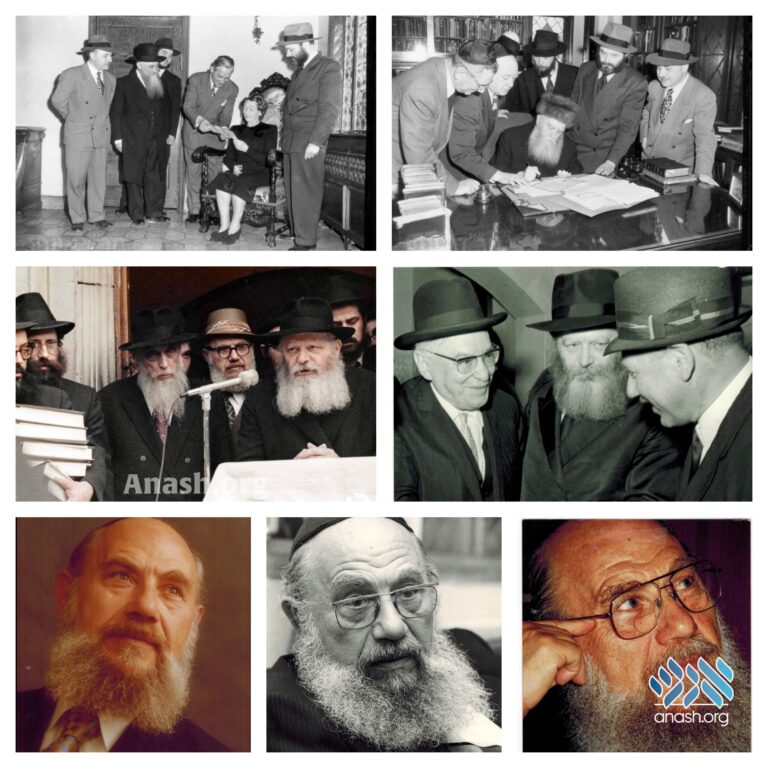

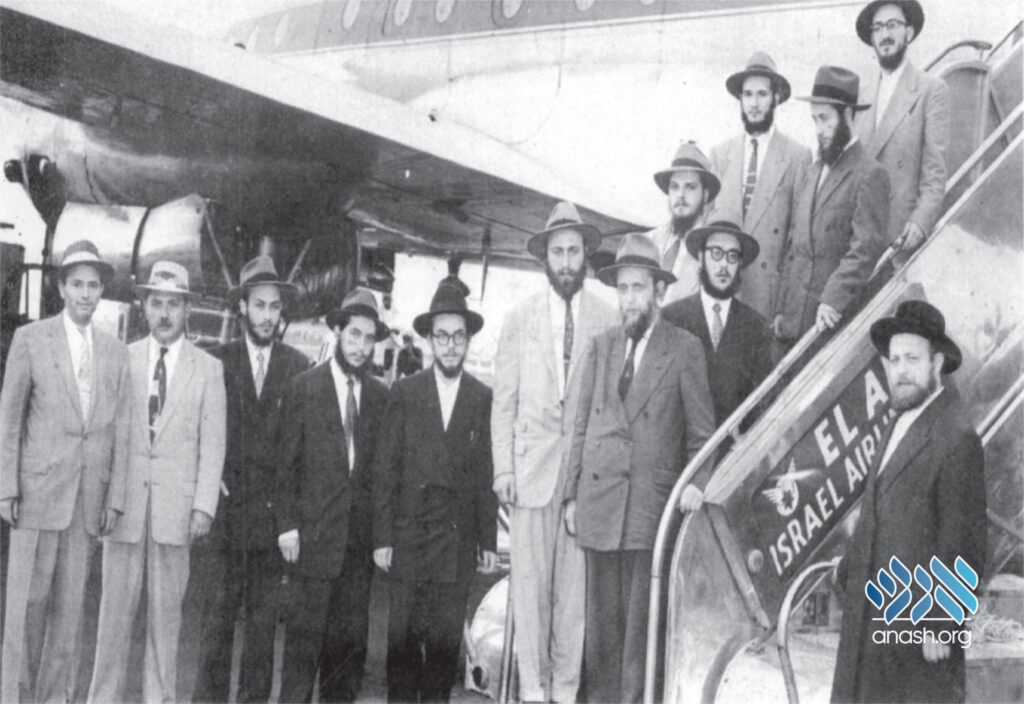
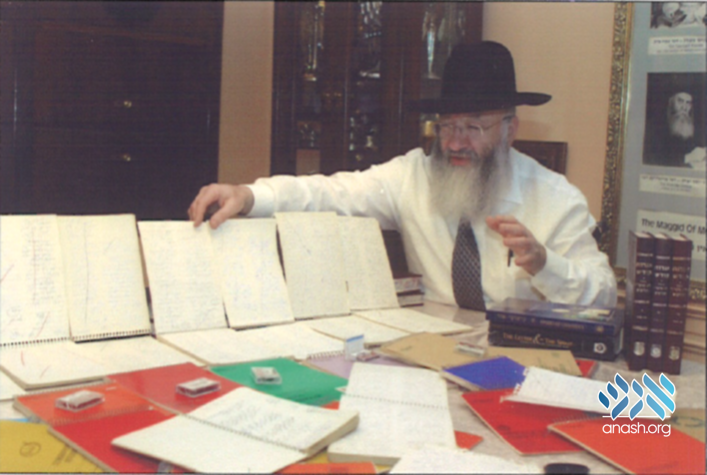
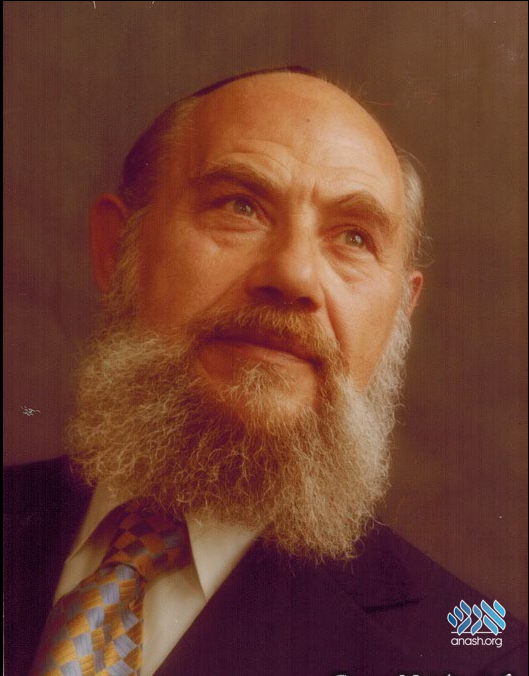
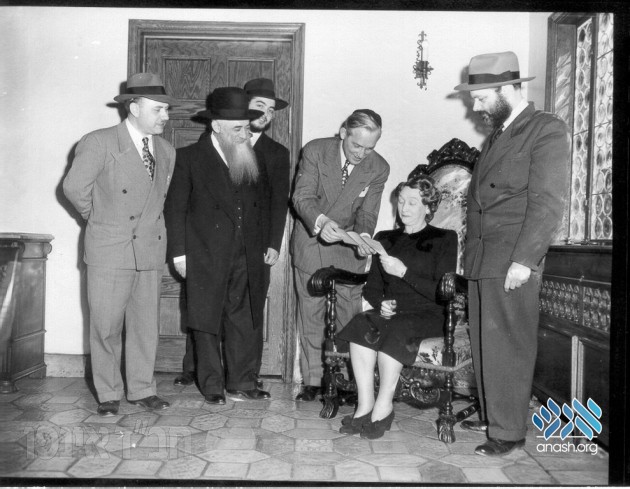
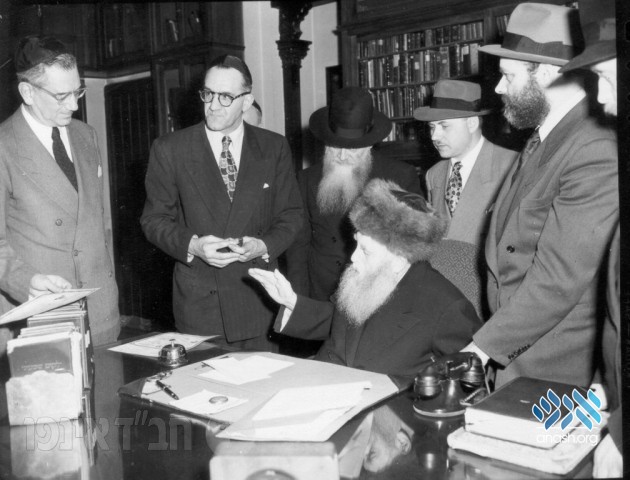
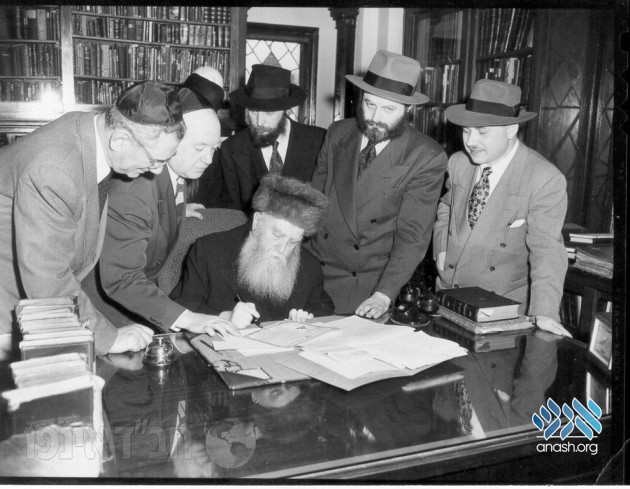

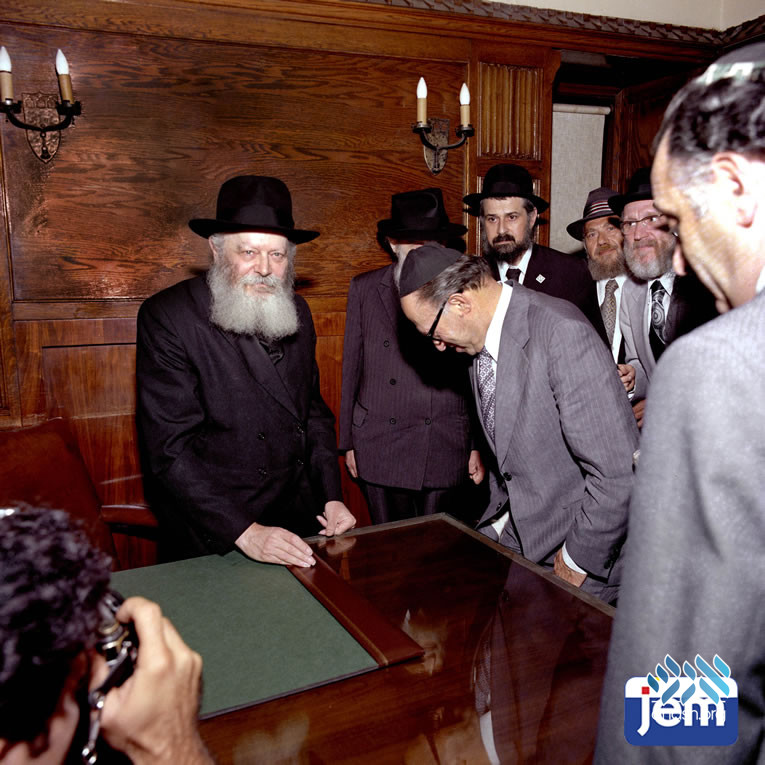

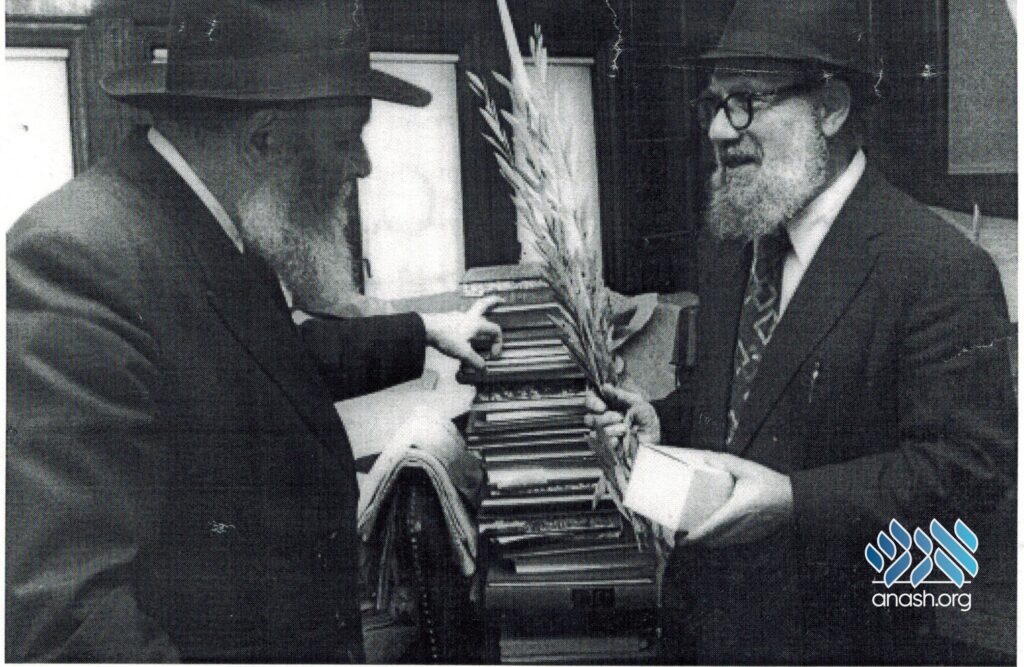
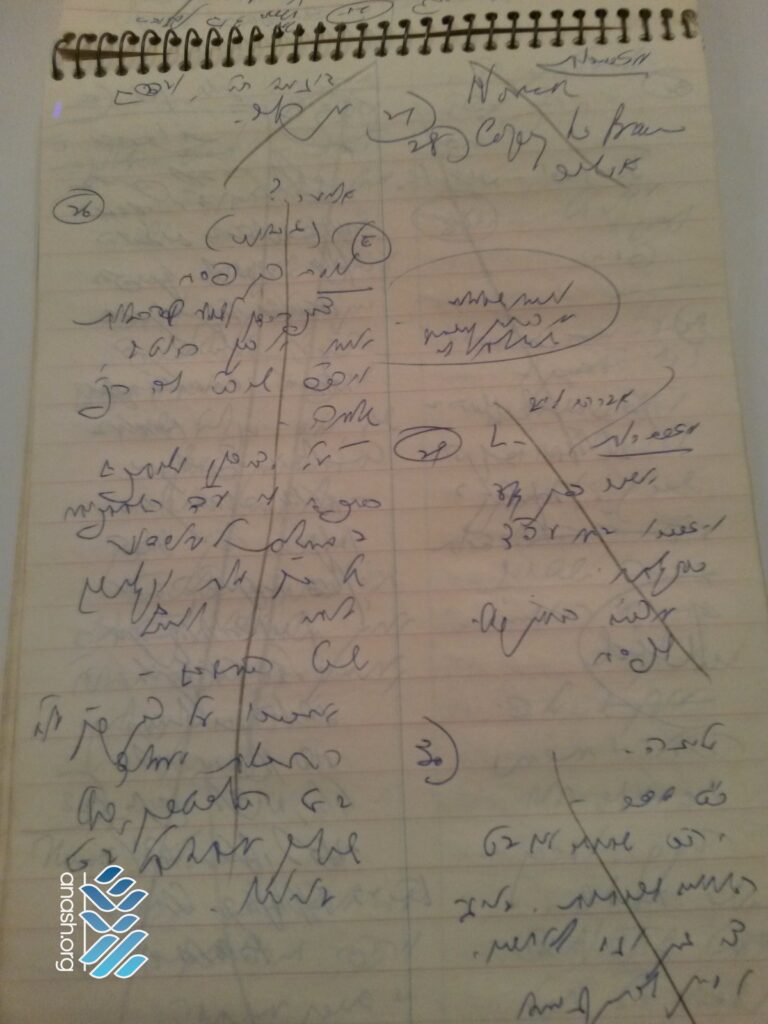

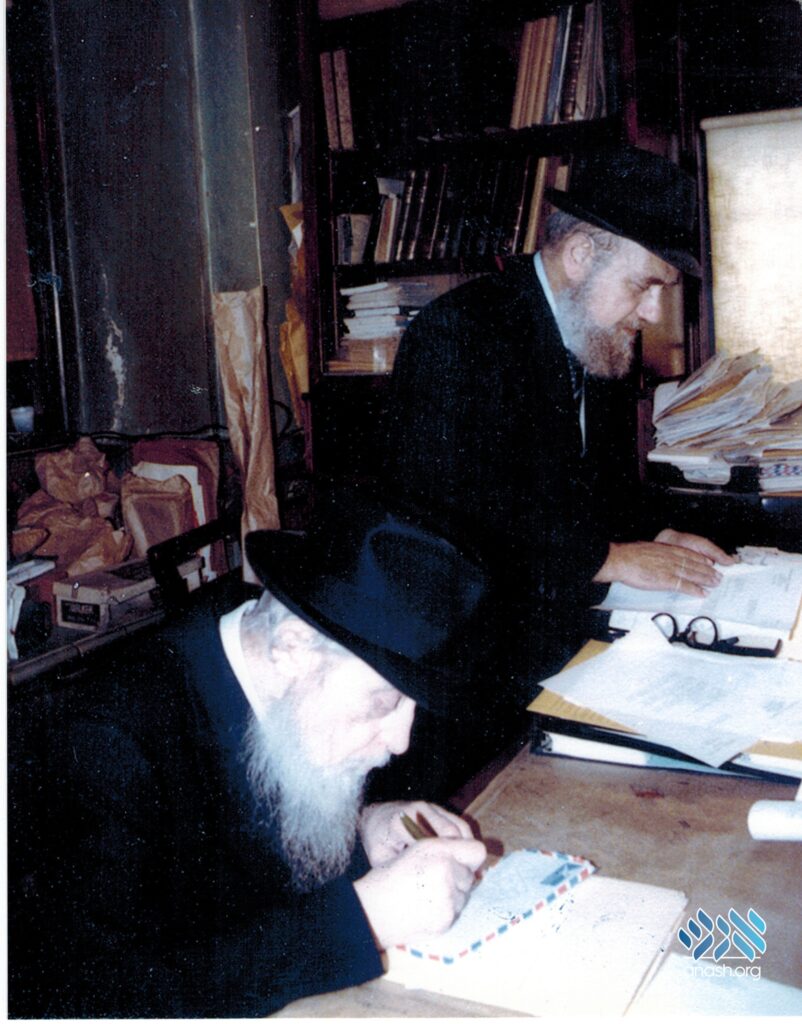


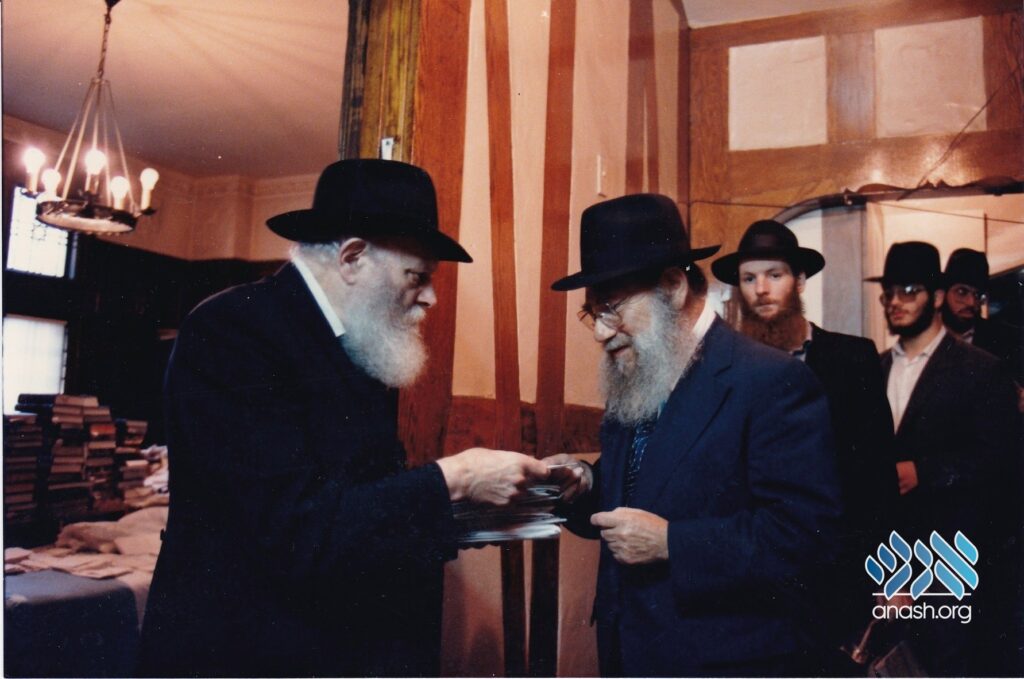
Discussion
We appreciate your feedback. If you have any additional information to contribute to this article, it will be added below.